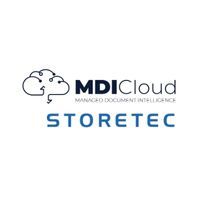Healthcare is one of the most document heavy industries in the world. From discharge summaries and referral letters to invoices, test results and compliance reports, the flow of paper and digital records never stops. For many NHS and private providers, managing this volume is still a daily struggle. Staff time is consumed by manual data entry, documents go missing across systems, and patients can feel the impact through delays and errors.
Enter document intelligence – a new wave of automation that uses AI and intelligent document processing (IDP) to transform how healthcare handles information.
Why Now?
The timing couldn’t be more urgent. Workforce shortages, financial pressure and regulatory demands are squeezing healthcare providers on all sides. Every minute spent on admin is a minute not spent on patient care.
The NHS alone processes millions of documents every month. Private providers face similar challenges in billing, patient communication and compliance. Manual handling is no longer sustainable. Document intelligence offers a way to ease the burden without adding headcount.
What is Document Intelligence?
At its core, document intelligence combines technologies like:
- Optical Character Recognition (OCR) to digitise scanned or handwritten text
- Natural Language Processing (NLP) to understand medical terms, context and meaning
- Machine Learning (ML) to learn patterns and improve accuracy over time
- Automation to route information straight into the right system, workflow or patient record
Instead of treating a hospital discharge letter as just “a piece of text”, document intelligence understands it contains a diagnosis, prescribed medication, follow-up appointments and actions for community care teams. It captures and routes each piece of information automatically.
The State of Play in UK Healthcare
This isn’t theory. Document intelligence is already being tested and adopted.
- AI-powered discharge tools: Chelsea and Westminster Hospital NHS Foundation Trust is trialling AI that speeds up discharge paperwork, helping free up hospital beds faster and reducing pressure on A&E.
- Ambient scribing: NHS England has published guidance on AI-enabled ‘ambient scribing” technology that listens during a consultation and produces draft clinical notes, saving clinicians hours each week.
- Private sector adoption: Private hospitals and clinics are using intelligent invoice processing and digital archiving to cut costs and improve billing accuracy.
The trend is clear. AI and automation technology is moving from pilots to mainstream.
The Benefits for Health and Care Providers
Saving Clinician and Admin Time
Automating document capture and processing can save thousands of hours a year. Clinicians get more time with patients. Admin staff can focus on higher-value tasks.
Improved Accuracy, Reduced Errors
Automated extraction reduces the risk of missed information or misfiled records. In a healthcare setting, that can mean fewer mistakes in medication, referrals or billing.
Faster Patient Flow
By speeding up discharges, referrals and test result processing, patients move through the system faster. This helps tackle backlogs and improve hospital flow.
Compliance and Governance
Every document handled through an intelligent platform comes with an audit trail. That’s vital for meeting NHS Information Governance standards, GDPR and CQC inspections.
Cost Efficiency
Less printing, less manual labour, fewer errors. The cost savings add up quickly and providers can reinvest those savings back into frontline care.
Unlocking Insights
Once data is structured, it can be analysed for research, operational improvements and population health management. Free text in clinical notes becomes a powerful data source.
The Challenges to Get Right
Of course, adoption isn’t without hurdles. Healthcare leaders must address:
- Data privacy and IG: Patient consent and security must come first. Any solution must meet NHS and GDPR requirements.
- Accuracy and trust: AI systems must be monitored, with humans in the loop to review outputs where needed.
- Integrations: New tools have to work with existing electronic health record (HER) systems, not add another silo.
- Change management: Clinicians and staff need training and confidence that automation will support, not replace, their expertise.
- Return on investment: Leaders will need to see clear evidence of time and cost savings to justify scaling.
What’s next?
The future of document intelligence in healthcare is already taking shape:
- Ambient scribing at scale – reducing clinician burnout by automating note-taking.
- Large Language Models – generating structured SOAP notes and clinical summaries.
- Real-time data extraction – making referrals, test results and prescriptions instantly available across systems.
- Patient-centred access – giving patients quicker, clearer access to their letters and care summaries.
- Evolving regulation – NHS England and the UK government are publishing new frameworks to guide safe, ethical use of AI in health and care.
How Providers Can Begin
For organisations considering the first step, the advice is simple:
- Start small. Pilot a single use case like outpatient letters or invoice processing.
- Ensure strong IG and compliance oversight from day one.
- Look for solutions that integrate with your existing systems.
- Keep humans in the loop to validate outputs and build trust.
- Track ROI in staff hours saved, error reduction and improved patient flow.
Conclusion
The future of healthcare will always be about people. But people need better tools. Document intelligence is a practical, proven way to ease the pressure on clinicians, reduce errors and improve patient outcome.
Whether NHS or private, providers that adopt intelligent document processing now will be better prepared for the challenges of tomorrow.
At this year’s HETT Show, come and see how MDI Cloud and Storetec are helping healthcare organisations take the next step. The future of document intelligence is here and it’s built for better patient care.
%20(1).png?width=500&height=58&name=HETT%20insights%20logo%20RGB-04%20(1)%20(1).png)



